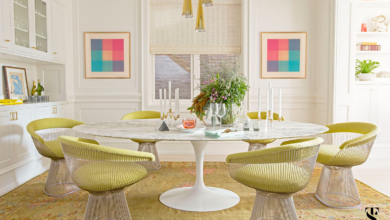Terrifying World of Art the Clown A Deep Dive into Horror

Introduction
Art the Clown has emerged as one of the most iconic figures in modern horror, captivating audiences with his unnerving presence and chilling antics. Unlike traditional horror villains, Art stands out through his silent yet expressive persona, which combines grotesque humor with visceral terror. From his humble beginnings in independent films to becoming a household name among horror enthusiasts, Art the Clown has carved a niche in the genre that is both terrifying and unique.
The rise of Art the Clown underscores the impact of well-crafted indie horror. As a character, he has transcended his low-budget roots to become a cultural phenomenon, inspiring fan art, cosplay, and even debates about the nature of fear in cinema. This article explores the origins, design, cultural impact, and future of this haunting villain, delving into what makes Art the Clown a standout figure in the world of horror.
1. Origins of Art the Clown
1.1. The Birth of the Character
Art the Clown was brought to life by writer and director Damien Leone, first appearing in the 2013 horror anthology All Hallows’ Eve. The film featured a series of chilling stories, with Art acting as the thread that connected them. However, it was the standalone Terrifier series that catapulted the character to stardom. In Terrifier (2016) and Terrifier 2 (2022), Art’s sinister antics took center stage, leaving audiences both horrified and intrigued.
Leone’s vision for Art was to create a villain who deviated from the norms of horror. Unlike traditional slashers, Art’s silent nature and exaggerated expressions added a layer of psychological terror. Portrayed by David Howard Thornton, the character’s physicality became a defining trait, blending mime-like gestures with horrifying brutality. This unique combination ensured that Art’s presence lingered long after the credits rolled.
1.2. Inspirations Behind the Character
Art the Clown draws inspiration from various sources, including silent film icons and classic horror clowns. While characters like Pennywise from Stephen King’s It rely on psychological manipulation, Art’s terror stems from his unpredictability and gruesome acts. Leone’s choice to make Art silent was a deliberate move, emphasizing visual storytelling over dialogue.
The character’s design also pays homage to the silent-era aesthetic, with a black-and-white color scheme and exaggerated facial makeup. By combining familiar clown motifs with grotesque originality, Leone crafted a figure that stands out in the crowded world of horror villains.
2. The Anatomy of Fear: What Makes Art the Clown So Scary

2.1. Visual Design
Art the Clown’s visual design is a masterclass in evoking fear. His monochrome appearance, with stark black and white makeup, creates a ghostly and otherworldly aura. The sinister grin, sharp facial features, and hauntingly wide eyes amplify his unsettling presence. Every detail of his costume, from the ruffled collar to his bloodstained props, is meticulously crafted to enhance his eerie appeal.
What sets Art apart is his ability to communicate terror without words. His facial expressions range from comically exaggerated to deeply disturbing, creating a stark contrast that keeps audiences on edge. This silent yet expressive approach makes him a truly unforgettable character.
2.2. Psychological Terror
Art’s silence is one of his most unnerving traits. Unlike villains who taunt their victims with dialogue, Art lets his actions speak louder than words. This unpredictability heightens the tension, as viewers never know what he’ll do next. His mix of sadism and dark humor adds another layer of complexity, making him both horrifying and bizarrely entertaining.
The graphic violence in the Terrifier series is another key element of Art’s terror. His kills are not only brutal but also inventive, showcasing a level of cruelty that shocks even seasoned horror fans. By blending physical horror with psychological dread, Art creates an atmosphere of pure unease.
2.3. The Supernatural Element
Though primarily depicted as a human killer, hints throughout the Terrifier films suggest that Art may possess supernatural abilities. His apparent invincibility, ability to reappear after death, and cryptic backstory fuel fan theories about his true nature. This supernatural ambiguity adds to his mystique, leaving audiences questioning whether he’s merely a man or something far more sinister.
3. Art the Clown in Pop Culture
3.1. Reception and Fanbase
Art the Clown has garnered a dedicated fanbase, thanks in part to the character’s unique design and the cult success of the Terrifier films. Horror conventions, fan art, and social media have amplified his popularity, turning him into a modern icon. Fans appreciate his departure from typical horror tropes, embracing his silent yet sinister persona.
The Terrifier films’ success has also sparked discussions about the role of indie horror in shaping the genre. Art’s rise demonstrates how compelling characters and creative storytelling can resonate even without big budgets or mainstream support.
3.2. Influence on the Genre
Art the Clown’s impact on the horror genre is undeniable. His character has reinvigorated interest in slasher films, inspiring new filmmakers to experiment with bold and unconventional villains. Compared to iconic figures like Jason Voorhees and Michael Myers, Art’s blend of humor, gore, and psychological terror feels refreshingly original.
3.3. Criticisms and Controversies
Despite his popularity, Art the Clown has not been without controversy. The Terrifier series’ extreme violence has drawn criticism from some viewers, with debates about whether the gore overshadows the storytelling. Additionally, censorship issues have arisen in some regions, reflecting the polarizing nature of Art’s character.
4. The Future of Art the Clown
4.1. Upcoming Movies and Projects
With the success of Terrifier 2, fans are eagerly anticipating future installments. Damien Leone has teased plans to delve deeper into Art’s backstory, potentially exploring his origins and supernatural elements. Speculation about crossovers with other horror franchises or expansions into comics and video games further fuels excitement.
4.2. The Legacy of Art the Clown
Art the Clown has solidified his place among horror’s greats. His character embodies the innovation and creativity that indie horror brings to the genre. By pushing boundaries and challenging conventions, Art’s legacy is poised to endure, inspiring both filmmakers and fans for generations to come.
Conclusion
Art the Clown represents a new wave of horror that prioritizes creativity and psychological terror over traditional tropes. His silent yet expressive nature, coupled with grotesque violence, has captivated audiences and reinvigorated the slasher subgenre. As his story continues to unfold, Art’s influence on horror will undoubtedly grow, cementing his status as one of the most haunting villains of our time.
FAQs
1. Who is Art the Clown, and what movies is he in?
Art the Clown is a horror character featured in All Hallows’ Eve and the Terrifier series.
2. What makes Art the Clown scarier than other horror villains?
Art’s silence, exaggerated expressions, and extreme unpredictability make him uniquely terrifying.
3. Who plays Art the Clown, and how was he brought to life?
The role of Art is portrayed by David Howard Thornton, known for his expressive physical acting.
4. Is Art the Clown supernatural?
Hints in the films suggest Art possesses supernatural abilities, though this remains ambiguous.
5. Will there be more movies featuring Art the Clown?
Yes, future installments of the Terrifier series have been announced, continuing Art’s story.
6. How does Art compare to Pennywise from It?
While both are clowns, Art is more brutal and silent, focusing on shock value rather than psychological manipulation.
7. Why is Art the Clown gaining so much popularity?
Art’s unique design and the resurgence of interest in indie horror have made him a fan favorite.





